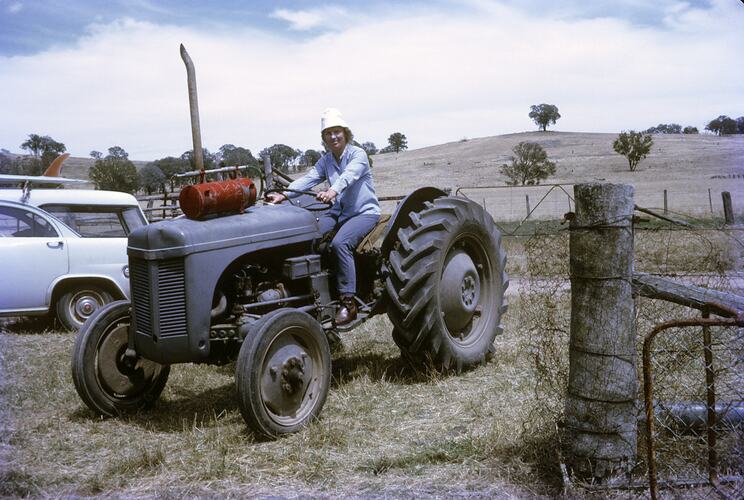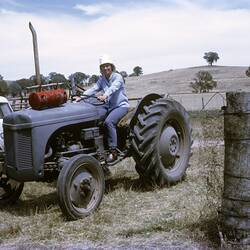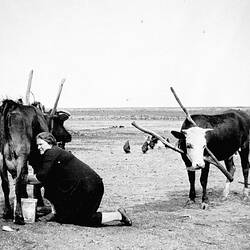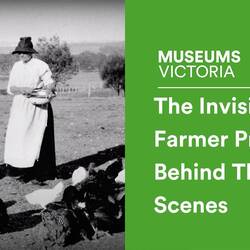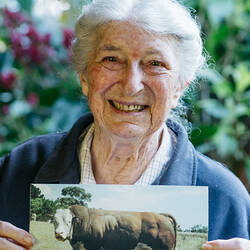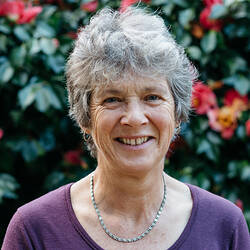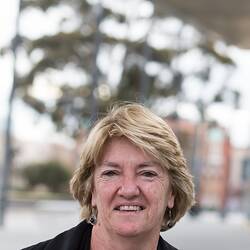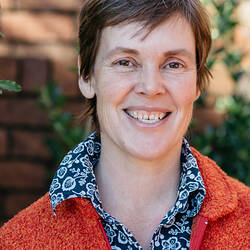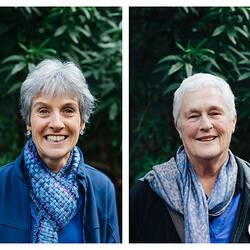Overview
The Invisible Farmer Project was the largest-ever study of Australian women on the land, uncovering the histories and stories of Australian women in agriculture. It began as a pilot project (2015-2016) and evolved into a three-year (2017-2020) nationwide partnership between rural communities, academic, government and cultural organisations, funded by the Australian Research Council. It sought to address the historical and contemporary invisibility of Australian farm women and to celebrate the creative and vital role that women play in sustaining Australian farms and rural communities. It combined personal narratives and academic research to map the diverse, innovative and vital role of women in Australian agriculture.
Key outcomes of the project were:
- Creation of new histories of rural Australia, including a series of interviews and photographs collected for Museums Victoria's Invisible Farmer Project collection;
- Enhanced understanding of the diverse, innovative and vital role of women in agriculture and rural communities;
- Documentation of the varied ways that women have adapted their farms in the face of drought, bushfires, climate change and food security;
- Stimulation of public discussions about contemporary issues facing rural Australia and its future;
- Development of significant public collections that will shape research, industry and public policy into the future;
- A widespread media and social media campaign that saw hundreds of thousands of people interacting with the stories of Australian farm women via the Project's website, including over 2.2. million interactions via the Project's social media accounts, Instagram, Facebook and Twitter.
The Pilot Project
The Invisible Farmer Project was born out of a successful pilot project that was undertaken in 2015/2016. This Project was funded by the McCoy Seed Fund and involved a partnership between Museums Victoria and The University of Melbourne, as well as collaboration with a range of collecting institutions and organisations. The project gained considerable media and public interest and resulted in the following outcomes:
- Oral history interviews;
- Presentations, exhibitions and workshops for communities and industry stakeholders;
- Intensive media publicity and interviews;
- Collaborative workshops with a range of collecting institutions;
- Development of an Australian Research Council Linkage application.
Partners
The Invisible Farmer project was an initiative of Museums Victoria with input from an external advisory group. Key partners were: ABC Rural, University of Melbourne, Monash University, Victorian Department of Economic Development, Jobs, Transport and Resources, National Library of Australia, National Pioneer Women's Hall of Fame, and the National Foundation for Australian Women The Project was also supported by a wide range of industry groups and organisations across Australia and worldwide.
Significance
Women in Australia play a vital role in farming and agriculture, contributing at least 48 percent of real farm income through their on and off-farm work (Missed Opportunities report, 1998). Sadly, however, women's contributions to agriculture have continued to be ignored, unrecognised and rendered invisible. Farming women have been excluded from censuses and official documentation, stereotyped as 'housewives' or 'domestics' despite their significant contributions to the farm economy and blindsided by a popularist vision of Australian agriculture that idealises masculinity and posits rural Australia as a 'male domain.' This is best summarised in a 1992 Australian Government report, The Invisible Farmer: A Summary Report of Australian Farm Women: 'Farming has traditionally been seen as a male domain, while women have been seen as homemakers or in domestic occupations rather than a visible or significant contributor to agriculture,' (Williams, 1992).
Some notable ways in which farming women have been rendered invisible include:
- 1891: a decision was made to not count farming women in the census.
- Women have been denied access to agricultural education opportunities, with some agricultural colleges not accepting women until the 1970s.
- Up until the 1990s women were legally defined as 'silent partners', unproductive.
- The dominant cultural representation of farming in Australia has continued to be male-oriented and focused on the 'man on the land.'
An important outcome of the Invisible Farmer Project was to create interest in the need to preserve the stories of women in agriculture and food production. The Project not only resulted in thousands of stories being unearthed, but it also had a significant reach and impact within industry groups, government, community life and the media.
References:
Missed Opportunities: Harnessing the Potential of Women in Australian Agriculture, Commonwealth Government of Australia, Canberra, Australian Capital Territory, Rural Industries and Research Development Corporation (RIRDC) and Department of Primary Industries and Energy (DPIE), 1998.
The Invisible Farmer: A Report on Australian Farm Women, Commonwealth Government of Australia: Department of Primary Industries, Canberra, Australian Capital Territory, Williams, Julie, 1992.
More Information
-
Keywords
Agriculture, Agricultural & Farming Organisations, Rural Industry, Rural Victoria, Rural Women, Women's Associations, Women's Movement, Politics, Sustainable Agriculture, Gender Roles
-
Localities
-
Authors
-
Article types
